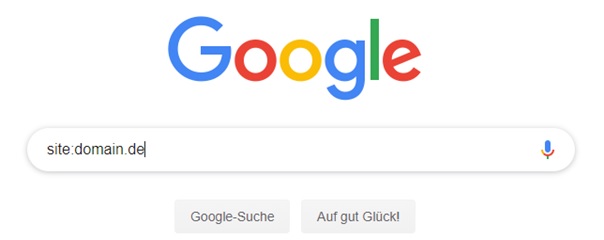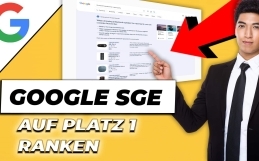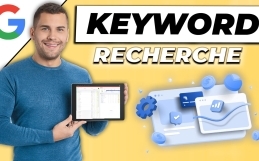12 Search Engine Optimization Tips
Search engine optimization is a discipline that, viewed holistically, seems very logical in many places. You optimize your own online store so that the target group finds your online store better. Guide the visitor to the places in the online store that turn a visitor into a user. For me, search engine optimization is all about targeted actions – leading users to your online store that get exactly what you want in terms of search intent. Generally, a search engine optimization has the goal that you have more traffic / more visitors in the online store, which in the end should increase the online store sales.
In this article I would like to explain to you what you should look for in your online store when you talk about search engine optimization.
Domain name, keyword domain
When choosing a domain, there is a little more to consider besides trademark protection. While it almost doesn’t matter for search engine optimization whether you name an online store after your dog or your child – you should always keep the actual search intent in mind when choosing a domain.
What is hidden behind a domain name for the user? Is this really what your online store is all about? A keyword domain is still beneficial in my opinion, but it can also limit one’s product variety.
Home page title
Unfortunately, this is often completely overlooked. The page title for your own home page from the online store. The home page is your shop window and for this reason it also needs a lot of attention, and a unique page title cannot be missing.
Since most search engines have a character limit on the SERPs (search results pages), the character length should be considered, as with any page title. Pay special attention to the set suffix and prefix here. Do not design your page title dynamically, but deliberately choose a page title for the home page.
Home page description
Even though many search engines are free to choose the page title and page description on the search results pages, you should definitely set a custom page description for the home page.
I always like to compare the page description and page title to the menu in a display case outside a restaurant – if you don’t appeal to the customer here, they won’t visit your online store. Stick to a character length of 140 to 150 characters for page descriptions.
Category and item page title
https://domain.de/magazin/seo
What applies to the home page also applies to the individual pages or, as is usual in an online store, to the category pages. A category page needs an optimized and unique page title.
So is the article or product in the online store. Don’t just copy something from the description text – formulate the perfect page title and regularly check its performance (including CTR; click-through rate)
Category and item page description
The page description simply has to fit. Don’t promise anything in any page description that your page doesn’t give. Focus on the search term for which the respective page (category or article page) should be found.
Indexing: Index and Follow
When indexing, make sure that only results from the online store that you want to index are indexed. If you want to exclude entire directories from indexing, you should exclude them from crawling via robots.txt. Indexing control is an important task in search engine optimization.
Google’s site command tells you which URLs Google knows from a domain. To do this, enter the term “site:” and the domain in the Google search box.
Duplicates and parameters
For online stores, parameter URLs are often a big problem. These arise, for example, through sorting options, the page search or category classifications for products. In addition to the unsightly parameter URL as well as the associated snippet, harmful duplicate content is also often created here. In this case, the duplicates must be removed or marked as such. This can be achieved by using the canonical tag – what is at the end in the source code is crucial for the original page
<link rel=”canonical” href=”https://domain.de/original”/>
Again, looking at the indexation status is important, so you should categorically exclude the search results page from indexation.
Just offer the customer more
The customer does not want boring article pages, or pages where you describe the category with only three sentences. Offer your customers more than the competition – think about things you can offer your customer. Don’t work exclusively with text, trust the power of images and videos.
Control your own online store
There are a number of tools available to help you control the online store. I personally like to work with Google’s products, such as Google Analytics and Google Search Console. But also with Screaming Frog and well-known SEO tools like SISTRIX, XOVI, SEARCHMETRICS.
Redirects in the online store
Pay attention to redirects when making changes in the online store and regularly take a look at Google Search Console and Bing Webmaster Tools). Regularly check redirects, and especially avoid redirect chains here.
Check the accessibility via the input such as http://domain.de, http://www.domain.de, https://domain.de and https://www.domain.de – you should also enter these four variants in your own Google Search Console.
User guidance in the online store
How does the user get to his destination – how quickly can the user become a customer and buy an item in the online store? Make it as easy as possible for users to find items. Choose meaningful categories, but don’t overdo it. If a user needs 10 clicks to find the desired article, this is not target-oriented.
Everywhere in the online store should have the main navigation – do not use the links in the footer to have “only” links. Focus the links in the footer on what the user is interested in and, of course, what the user needs to find (imprint, privacy and co).
When analyzing a subpage, check how many clicks it takes a user from the home page to reach that subpage. In most cases, this is where you should already start reducing this amount of clicks.
Load time and image optimization
Regularly check the website load time – and avoid unnecessary amounts of CSS, minimize your source code.
In an online store, product images are super important. Be sure to avoid “no product image available” placeholders. If the user can’t see what they are buying, they won’t buy it. This also applies to the loading time of the product images – here you should pay attention to the format and size of the product images. A 4k product image, but which you only display in 600x400px, doesn’t have to be.
If you use images, additionally pay attention to the correct image designation and possibly to the indexing of your own images.




















